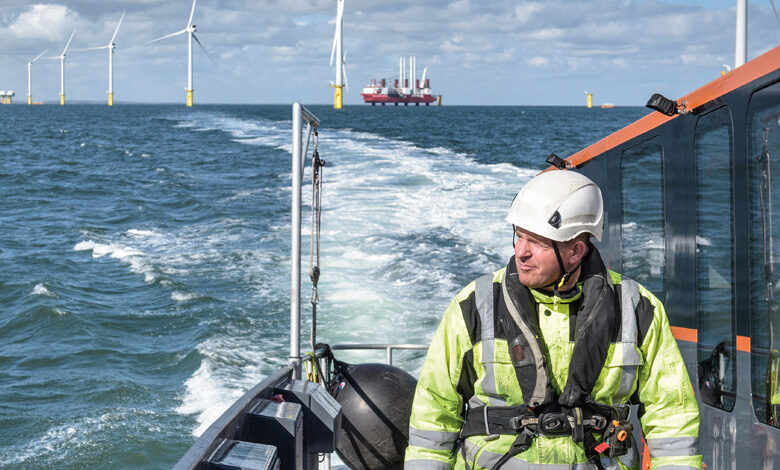Auction-based scheme most likely for renewable energy support

As the Department for the Economy seeks to deliver on its 2023 energy action plan pledge to have a renewable energy support scheme in place by the end of 2023, a recently closed consultation phase sought to set out how that scheme should take shape.
While the idea of simply transposing the renewable energy support scheme in Britain onto Northern Ireland was deemed not viable by the Department for the Economy, a scoping exercise performed by Cornwall Insight on behalf of the Department prior to the publication of the consultation terms found that “a highly competitive auction process similar to those seen in the Great Britain and Republic of Ireland markets is likely to be the best approach” for larger investors and economies of scale.
However, the report into the scoping round also notes that microgenerators “would require a very different subsidy, with more certainty and less complexity”, meaning that it is incumbent upon DfE to structure a scheme that will “meet the needs of all parties, or [find out] if alternative approaches (such as separate pots or even separate subsidies) are required”.
Central to the consultation and the eventual shape that the scheme will take will be the principles it follows, which form the first question of the consultation document. Respondents were asked if they agree with the three core principles as outlined by DfE:
- Incentivise sufficient renewable electricity generation to ensure that at least 80 per cent of electricity consumption is from renewable sources by 2030.
- Ensure that consumers pay a fair price for electricity produced locally and that prices are more stable.
- Encourage a wide range of renewable sources to diversify the technology mix to support security of supply.
“A consultation on the performance of the CfD scheme in Britain published in July 2021 found that the many projects would not have been viable without the CfD support mechanisms, meaning that the scheme has supported the faster rollout of renewable electricity projects while delivering lower costs for consumers.”
Auction-based scheme
The second question put to respondents concerned whether a Contracts for Difference (CfD) scheme should be the preferred approach to supporting renewable electricity generation in Northern Ireland, providing the clearest hint as to the approach most likely to be taken. The main advantage of such an approach, DfE states, is that “depending on current energy market prices, funds can move bidirectionally to support either renewable electricity generators or consumers”, meaning that funds move from suppliers to generators when wholesale prices are below the strike price and vice versa when the wholesale prices are above the strike price.
The Department states that CfD schemes have “contributed to dramatically reducing the cost per unit of energy”, citing the example of the UK, which has utilised a CfD scheme in its renewable energy supports. The cost of electricity generated by UK offshore wind farms has “reduced from over £100/MWh in the initial auction rounds to around £40/MWh in the latest rounds” under CfD mechanisms. A consultation on the performance of the CfD scheme in Britain published in July 2021 found that the many projects would not have been viable without the CfD support mechanisms, meaning that the scheme has supported the faster rollout of renewable electricity projects while delivering lower costs for consumers. The use of the CfD model allowed the UK Government to unveil its biggest ever round of renewable energy auctions with £285 million per annum in funding for low-carbon technologies, including £200 million for offshore wind per year, in December 2021.
CfD mechanisms can provide protection against market volatility, a concern for investors given that prices in the Single Electricity Market fell to €23/MWh in May 2020, rose to €143/MWh in July 2021, and reached €402/MWh in September 2021 during a period of low wind which coincided with a number of gas plants being offline. CfD structures provide certainty, and benefit consumers in the right market conditions, by locking in a price per unit of energy generated over the course of the contract agreed. Since September 2021, market prices have risen above strike prices and CfD generators in Britain have been paying back to suppliers, reducing the green levy applied to British household electricity bills. Low Carbon Contracts Company research shows that £275 million was paid back to suppliers from CfD generators over quarter four 2021 and quarter one 2022.
The Department also points to the fact of both Britain and the Republic of Ireland having already established support schemes using broadly similar CfD mechanisms and states that “should a similarly designed auction-based support scheme be launched in Northern Ireland, such familiarity and confidence in the effectiveness of CfD schemes would be expected to encourage investment and draw developers’ interest to the Northern Irish market”. However, Cornwall Insight’s scoping report notes differences between the British and Irish markets, with the Irish Government considering the extension of the lifespan of the subsidy to encourage investor participation, while British consultations have considered shortening the lifespan to benefit consumers. The DfE, the report says, will “need to carefully balance these types of considerations”.
“Small and micro generation has played a ‘crucial role’ in reaching 40 per cent renewable share by 2020, but DfE notes that the 80 per cent target ‘naturally favours the introduction of a scheme that focuses on encouraging the deployment of large-scale assets over small and micro generators’.”
The third question put to respondents in the consultation regarded the fairness of participation in the renewable energy support scheme being made mandatory for all generators. Such an approach would “allow more protection to consumers, as the costs of the schemes would be established when the support is awarded and changes in market prices would less directly impact the costs to consumers” and the more assets deployed under the structure, the more guaranteed protection for consumers. While the British market is currently voluntary for generators, the UK Government “has recently considered moving existing merchant and Renewable Obligation subsidised assets onto CfDs in a response to high market prices and supernormal profits”, with similar approaches seen in both Italy and Germany.
Capacity and microgeneration
Respondents were also asked what the minimum capacity for new sites should be for a project to be eligible for the renewable energy support scheme, and if that minimum capacity should be technology specific. As Northern Ireland aims at an 80 per cent share of electricity generation for renewables by 2030, renewable output will be required to effectively double by then. Small and micro generation has played a “crucial role” in reaching 40 per cent renewable share by 2020, but DfE notes that the 80 per cent target “naturally favours the introduction of a scheme that focuses on encouraging the deployment of large-scale assets over small and micro generators”. The Republic’s RESS requires a minimum capacity of 0.5MW, while Britain’s CfD scheme requires a minimum of 5MW for solar, onshore wind, and remote island wind to be eligible.
The Cornwall Insight report states that small-scale assets contributed to roughly 40 per cent of total solar PV capacity deployed in Britain in 2021, but DfE points to that fact that wind sites accounted for almost 85 per cent of all renewable electricity generation in Northern Ireland in September 2022, indicating that “even when microgeneration composed a substantial portion of total solar PV capacity, it only very marginally contributed to meeting wider renewable electricity targets”. Indeed, the Department’s attitude towards small-scale and microgeneration can perhaps be best seen in the phrasing of its question on the topic: “Do you agree that incentivising small-scale and microgeneration would not make a substantial contribution to reaching the Energy Strategy targets?”
Community benefits
One of the core differences between the models in Britain and the Republic of Ireland is that the Republic’s RESS scheme requires a project to deliver support to its local community at a set level, while the British scheme contains no such provisions. Such supports can take the form of community grants or discounts on electricity network charges that taper off with increasing distance from the supported wind farm. The Danish policy of requiring developers to offer the local community the opportunity to invest in the project is also mentioned by DfE as a successful example.
With the consultation period having closed in April 2023, and contract and payment structures also to be factored in, DfE will now seek to finalise its design of how a support scheme will look in Northern Ireland and reach its target of publication before year-end 2023.






